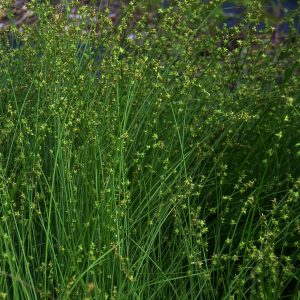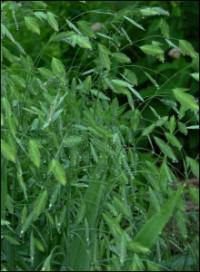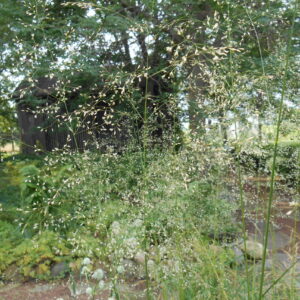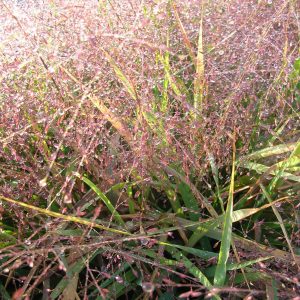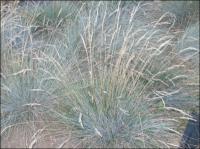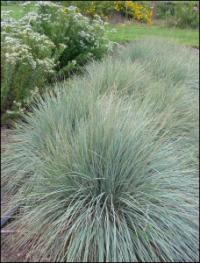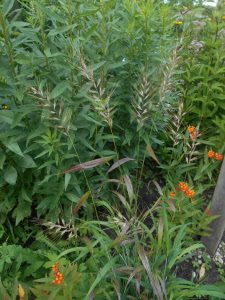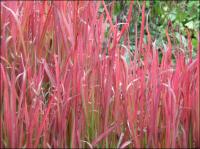Grasses, Sedges & Rushes
Showing 9–16 of 26 results
-
Carex rosea Rosy sedge, Stellate sedge PERENNIAL GRASS Z 3-9
Mounds of thinnest of medium green leaves mingled with stems with star shaped seed clusters in May-June
OUT OF STOCK
Mounds of thinnest of medium green leaves mingled with stems with star shaped seed clusters in May-June.
Size: 12” x 10”
Care: part shade and shade in moist well-drained soil
Wildlife Value: No. Dakota south to TX & east incl. WI, New Brunswick and Nova Scotia.
Awards: Great Plants for the Great Plains Grass of the Year 2020Collected before 1811.
-
Chasmanthium latifolium Northern Sea oats Z 5-9
Graceful, pendulous oat-like spikes
In August – December Northern sea oats bear pendulous panicles of oat-like spikelets, emerging green and turning bronze. They hang on all winter.
Size: 36" x 24"
Care: full sun to part shade in any soil
Native: Eastern U.S., New Jersey to Texas
Wildlife Value: attracts butterfliesIntroduced by Michaux (1746-1802) extraordinary French plant hunter, who searched much of eastern No. America for plants. Indians ate the seeds for food. Used ornamentally since Victorian times for fresh and dried arrangements.
-
Deschampsia caespitosa Hair grass Z 4-9
Airy pink panicles, like delicate billowing clouds of seed heads, top clumps of arching slender leaves in mid- summer persisting through winter.
Airy pink panicles like delicate billowing clouds of seed heads, top clumps of arching slender leaves in mid-summer persisting through winter.
Size: 2-4' x 18"
Care: moist soil in sun to shade
Native: Europe, Asia & No. America, Wisconsin nativeDeschampsia named for French botanist Deslongchamps (1774-1849.) Caespitosa means that it grows in clumps. This species found by mid-1700’s.
-
Eragrostis spectabilis Purple Love grass Z 5-9
Profuse tiny purple panicles in August-September. One of internationally known garden designer Piet Oudolf’s 100 “MUST HAVE” plants, Gardens Illustrated 94 (2013)
Profuse tiny purple panicles in August-September. One of internationally known garden designer Piet Oudolf’s 100 “MUST HAVE” plants, Gardens Illustrated 94 (2013)
Size: 2’ x 18”
Care: Full sun in well-drained soil - slow to emerge in spring. Drought tolerant
Native: Maine west to Minnesota, south to Arizona, Wisconsin nativeEragrostis is Greek meaning “love”, (eros) and grass, agrostis. This species first named by German botanist Frederick Pursh (1774-1820) in his book Flora Americae Septronalis. (1813)
-
Festuca ovina var. glauca Blue fescue Z 4-10
Short mound of silvery blue spiky grass tufts. In summer short spikes of blue-green flowers.
Short mound of silvery blue spiky grass tufts. In summer short spikes of blue-green flowers.
Size: 12" x 10"
Care: full sun, well-drained soil
Native: temperate areas in Europe
Wildlife Value: host for larvae of a few butterfliesFestuca is Latin meaning “grass stalk..” This variety described and named in 1881
-
Helictotrichon sempervirens Blue oat grass Z 4-9
June-October spikes rise above a rounded mound of thin, steel-blue, evergreen (sempervirens means always green) leaves – one of the best.
OUT OF STOCK
June-October spikes rise above a rounded mound of thin, steel-blue, evergreen (sempervirens means always green) leaves – one of the best.
Size: 4' x 2'
Care: full sun in moist well-drained to well-drained soil
Native: Europe
Awards: Elisabeth Carey Miller Botanical Garden Great Plant Pick, England’s Royal Botanical Society Award of Garden Merit.1st described in Prospectus de l’Histoire des Plantes de Dauphiné 17. 1779. Liberty Hyde Bailey said that Blue oat grass was “scarcely grown as ornamental subjects.”(1933)
-
Hystrix patula syn. Elymus hystris var. hystris Bottle brush grass Z 5-9
June thru fall bears 6” long spikes looking like bottle brushes
OUT OF STOCK
June thru fall bears 6” long spikes looking like bottle brushes.
Size: 2-3’ x 12-18”
Care: sun to part shade in dry to moist well-drained soil - tolerates dry shade
Native: Nova Scotia S to Virginia, W to ND and OK. Wisconsin native
Wildlife Value: Birds eat seedsHystrix from the Greek (‘hedgehog’) meaning “with spikes” or “bristly” describing the flowers and patula means “spreading.” Collected before 1794. In 1913 L H Bailey wrote, “sometimes used for lawn decoration and for borders.”
-
Imperata cylindrica ‘Rubra’ Japanese blood grass Z 4-9
Green grass blades tinged with red turn blood red in late summer.
Green grass blades tinged with red turn blood red in late summer.
Can not ship to: Alabama, Arizona, Arkansas, Florida, Georgia, Kansas, Louisiana, Maryland, Mississippi, New Jersey, New York, South Carolina, Tennessee, Texas, Utah & West Virginia
Size: 16-20" x 12" gradually spreading
Care: sun to light shade in moist well-drained soil.
Native: Japan
Wildlife Value: resistant to deer and rabbitsCultivated in Japanese gardens since 1800’s. 1st published description in 1812. Introduced to the U.S. in 1911 near Mobile Alabama as packing material in a shipment of plants from Japan and into Mississippi as a forage crop from the Philippines before 1920.

